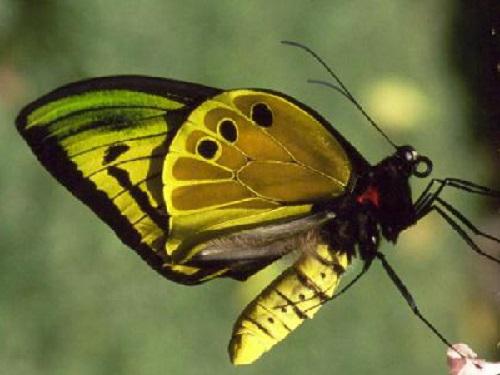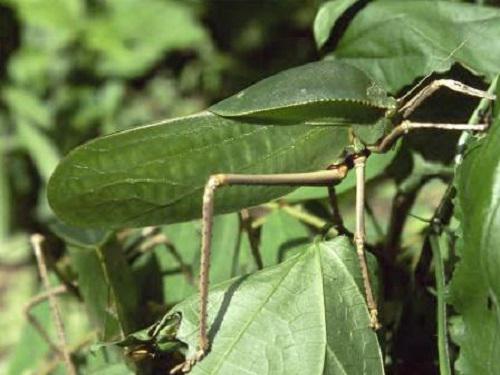Rob Small
Investigating the uptake and success of insect farming in Papua New Guinea

Male Goliath Birdwing Butterfly (Ornithoptera goliath).
Papua New Guinea is a group of islands, including half of New Guinea, located to the east of Indonesia between the Coral Sea and the South Pacific Ocean. The rainforests of Papua New Guinea are subject to deforestation as a result of growing commercial demand for tropical timber, and, with a high proportion of Papua New Guineans dependant on forest resources for subsistence, it is estimated that only 65% of the primary forest cover remains. Although rural communities have strong bonds to their land, in many cases the sale of logging rights is perceived as the only way for locals to derive an income. However, more recently, the farming of insects, most notably birdwing butterflies which are highly prized by Western collectors, has been shown to provide a high value commodity for a low amount of investment which at the same time encourages the conservation of forest areas.

The world’s largest Grasshopper (Siliquofera granddis).
A programme for the sustainable farming and collecting of insects in Papua New Guinea has been in place for the past 25 years since the inception of the Insect Farming and Trading Agency (IFTA) by the Papua New Guinean Department of Wildlife. IFTA has concentrated on establishing small scale village farming and collecting businesses in all provinces of the country. There is increasing evidence that, particularly where habitat loss is a critical threat to species, sustainable use may be the chief mechanism through which conservation is achieved.
This project aims to evaluate the success of this programme and the influence that it has had on the conservation of Papua New Guinea’s fauna and flora. Research will be conducted using IFTA records to determine typically how long typical farming projects last in a particular area, how widely insect farming is conducted throughout Papua New Guinea, and whether long-term success is determined by location. Interviews will be conducted with insect farmers from villages close to Bulolo in order to determine whether this type of project increases financial capital to the detriment of social capital, who receives the benefits of the income, and whether insect farming is of enough significance to make an impact on the whole community.
The farming of insects in Papua New Guinea has been mooted as a solution to improving livelihoods and changing attitudes towards biodiversity conservation. This project will be critical to gaining understanding of whether the IFTA’s strategy is a suitable blueprint for the sustainable use of species in other nations of the tropics.